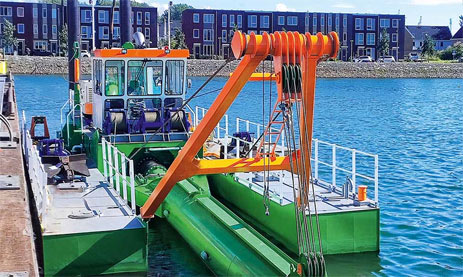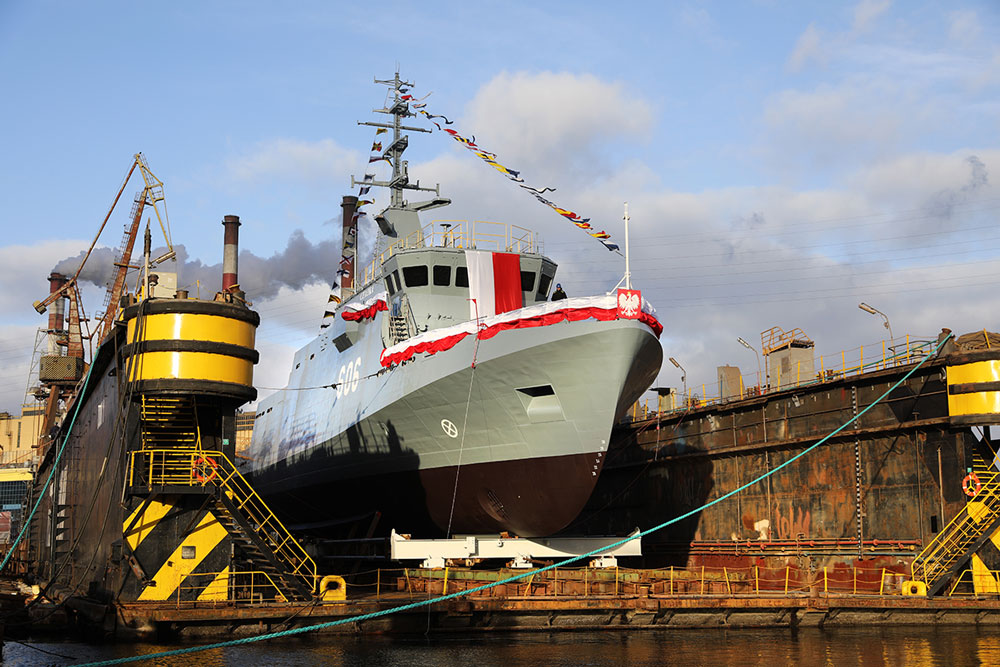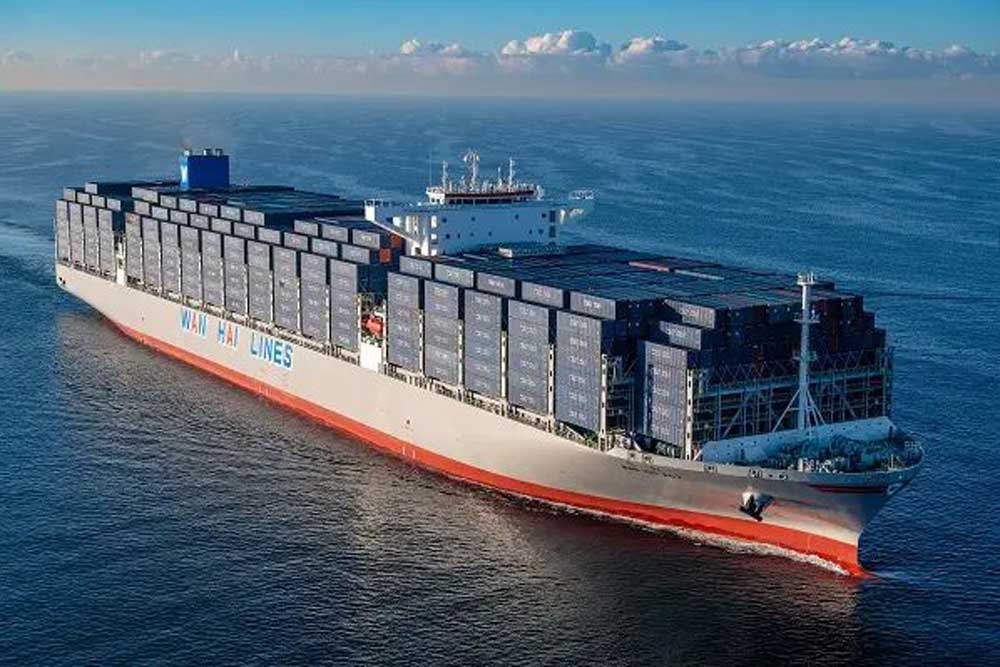The “Fleeming Jenkin” ordered by Jan De Nul has been launched at the GMHI Haimen shipyard in China. With a capacity of 28,000 tons and a length of 215 m, the ship is the largest of its kind.
The “Fleeming Jenkin” is now entering the final construction phase, including sea trials. Delivery is scheduled for the second half of 2026. The ship has been specially designed for laying long and heavy cables in waters up to 3,000 meters deep. The submarine cables are to be used for the transmission of renewable energies, Jan De Nul announced. In addition to the “Fleeming Jenkin”, the identical sister ship “William Thomson” is also being built in China.
“The ‘Fleeming Jenkin’ brings together all of the cable-laying expertise we have built up over the last fifteen years,” said Wouter Vermeersch, Director Subsea Cables Offshore Energy at Jan De Nul. “The entire vessel and the technologies on board were developed by our in-house specialists. The result is a vessel that works very efficiently and reduces both the costs and the environmental footprint of our projects.”
The vessel will be equipped with three cable drums and a large cargo hold for fiber optic cables to lay up to four strands simultaneously. The “Fleeming Jenkin” can handle tensions of up to 150 tons, which is equivalent to the weight of the Statue of Liberty.
The ship is powered by biofuel and green methanol to reduce CO2 emissions. Particle filters and a NOx reduction system should also be able to remove 99% of harmful nanoparticles from the exhaust gases.
First order in the North Sea
The ship’s first order has already been confirmed: following its commissioning, the “Fleeming Jenkin” will be deployed for grid operator Tennet’s 2 GW program off Germany and the Netherlands. The program introduces a new generation of offshore grid connection systems that can each transmit up to 2 GW. This is more than double the capacity of existing connections, which are usually between 700 and 900 MW. By comparison, an average nuclear power plant typically generates between 1 and 1.6 GW. The “Fleeming Jenkin” will bundle and join four cables at each of these connections. In total, over 2,800 km of cable will be laid over a distance of more than 700 km.
An estimate by the Association of European Transmission System Operators shows just how high the demand for subsea cables is in Europe alone: by 2050, around €400 billion will be needed to expand the infrastructure for offshore energy in order to achieve the target of 355 GW of installed capacity for renewable energies.
“The ‘Fleeming Jenkin’ and her sister ship ‘William Thomson’ are the best vessels on the market for laying interconnecting cables that link energy grids over long distances. These connections are crucial for building a reliable energy grid based on renewable energy,” says Vermeersch.
Jan De Nul also announced last week a new vessel for the protection of submarine cables: the “George W. Goethals”. Due to their strategic importance, these cables can be a target for acts of sabotage, as was recently demonstrated in the Baltic Sea. The new ship protects the cables with large stones at depths of up to 400 meters. It is Jan De Nul’s third “Rock Installation Vessel”, which can transport more than 30,000 tons of material.














